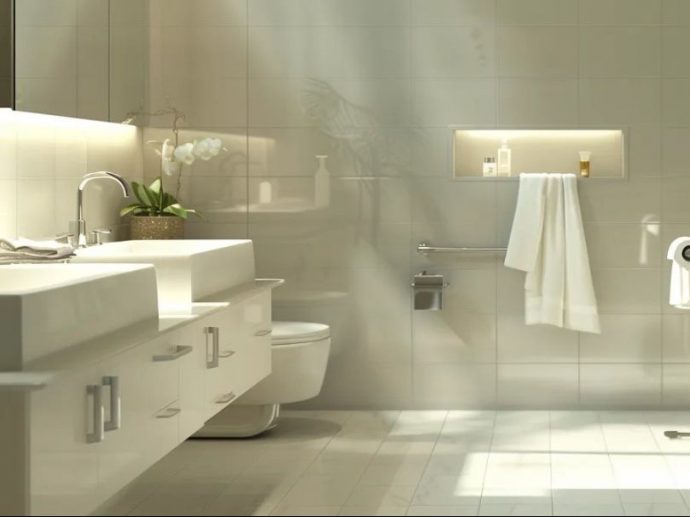Categories more
- Adventures (17)
- Arts / Collectables (15)
- Automotive (37)
- Aviation (11)
- Bath, Body, & Health (77)
- Children (6)
- Cigars / Spirits (32)
- Cuisine (16)
- Design/Architecture (22)
- Electronics (13)
- Entertainment (4)
- Event Planning (5)
- Fashion (46)
- Finance (9)
- Gifts / Misc (6)
- Home Decor (45)
- Jewelry (41)
- Pets (3)
- Philanthropy (1)
- Real Estate (16)
- Services (23)
- Sports / Golf (14)
- Vacation / Travel (59)
- Watches / Pens (15)
- Wines / Vines (24)
- Yachting / Boating (17)
Creating Comfort: Making Arrangements for Moving a Senior Relative Into Your Home
Published
02/05/2025Transitions can be challenging, especially when they involve moving a senior family member into a new living environment. Deciding to bring an elderly relative into your home is a significant step that requires careful planning and thoughtful consideration. The change not only affects daily routines but also emotional well-being and relationships within the family. Preparing yourself and your home to become a welcoming and safe space for your senior loved one is a compassionate and important task. Keep reading to find out how you can make this transition as smooth and comforting as possible.
Integrating Senior-Friendly Technology and Safety Features
Technology is making life easier and safer for seniors. Personal emergency response systems provide quick access to help, while smart home devices allow them to control lighting, temperature, and entertainment with ease. Security measures like cameras and monitoring systems offer peace of mind, and fire safety equipment should be regularly tested. Automated pill dispensers help manage medication schedules, reducing the risk of missed or incorrect doses.
For daily tasks, assistive devices support cognitive health by offering reminders and communication help. Grocery delivery near you ensures seniors can still choose and purchase their essentials without leaving home. These innovations promote independence while keeping safety a priority.
Essential Home Modifications for Senior Safety and Comfort
When adapting your home for a senior relative, safety should be the top priority. Fall prevention is key, so consider installing grab bars in the bathroom, railings on staircases, and removing trip hazards. Good lighting also helps prevent accidents—add nightlights in hallways and bathrooms, ensure entryways are well-lit, and place light switches within easy reach.
Accessibility upgrades, like raised furniture, walk-in showers, and higher toilet seats, can make daily life easier. Comfort is also important, and maintaining a stable indoor temperature is essential for seniors. Regular HVAC checks from professionals like E.C. Waters Air Conditioning & Heat Orlando FL can ensure reliable heating and cooling for a comfortable home.
Understanding the Emotional Impact of Moving a Senior Relative
Leaving a long-standing home can be overwhelming for seniors, who may feel a mix of emotions from anxiety to excitement. To help them transition, it's important to approach the topic with empathy and openness, acknowledging their role in the family. Regular communication is crucial to understand their emotional state and make them feel heard.
Involving seniors in the planning process can maintain a sense of autonomy and control, making the transition smoother. It's also important to remember that this move can be a significant change for both the senior and the family, requiring resilience and open dialogue to prepare for the changes.
Planning for Accessibility: Adjusting Your Home Layout
An accessible home requires more than just adding assistive features; it also involves rearranging or modifying the layout. Open floor plans can accommodate mobility devices more easily, and clear pathways are essential. If a home has multiple levels, consider having the senior's primary living space on the ground floor or installing stairlifts for safe access to upper floors.
Adjustments to the bedroom should include adjustable beds, accessible storage, and easy-to-reach items to foster independence and reduce the need for constant assistance. Kitchen modifications should promote ease and safety, with lower countertops, pull-out shelving, and user-friendly appliances. These features allow seniors to participate in kitchen activities, boosting their sense of involvement and self-esteem.
Establishing a Support System for Ongoing Care and Social Interaction
Moving a senior relative into your home should not mean a cessation of their social life. Foster relationships by maintaining contact with friends and relatives, organizing regular family gatherings, and establishing a reliable support system beyond the immediate family. Explore local community services and programs for seniors, offering opportunities for social interaction, physical activity, and continued education.
Consider professional care for health care visits or ensuring your well-being is prioritized. Encourage hobbies and activities that align with your senior relative's interests and abilities, such as gardening, painting, reading, or participating in community events. Staying active and engaged can positively impact their health and happiness.
Altogether, moving a senior relative into your home is a significant transition that involves careful preparation, patience, and adjustments. By considering their emotional needs, making your home safe and accessible, integrating technology, and fostering a supportive environment, you can create a comforting and nurturing space for them. It’s about combining love and practicality to ensure the highest quality of life for your loved one.
















